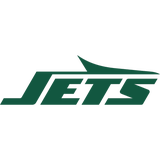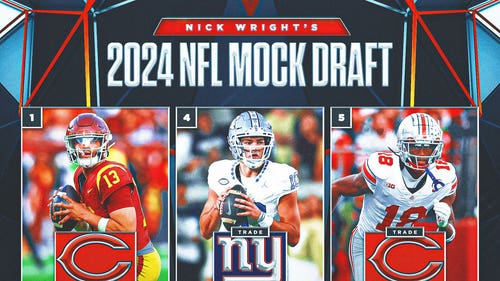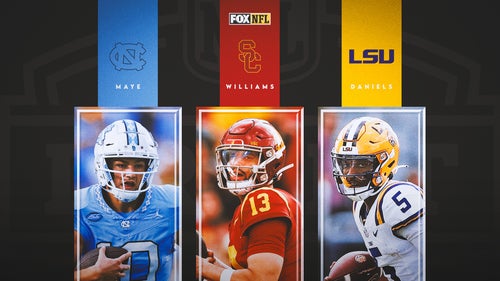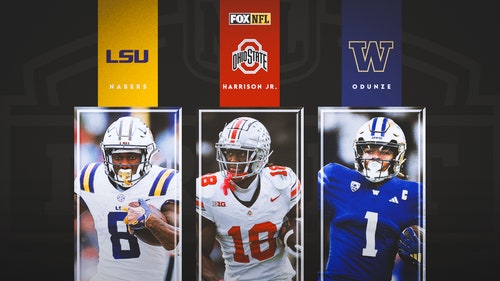
Who's the king of this NFL free-agent class? An undrafted cornerback
Believe it or not, cornerback A.J. Bouye is eyeing a somewhat moderate purchase for March 9, when the figurative Brinks truck will show up in his driveway with a decidedly bigger prize.
“Only thing I can think of is a truck with TVs in it,” Bouye said from his cell Wednesday afternoon. “Then, my daughter won’t have to scream at me because she doesn’t have her headphones in. She watches ‘Frozen’ two times a day. It’d be good just to let her watch that in the truck in peace.”
You can forgive the free agent-to-be if he’s still getting used to all this. After all, as recently as Oct. 2, Bouye was the fourth corner on his own Houston Texans team, and coming off the bench to play just 37 percent of the defensive snaps in a narrow win over the Titans, stuck behind a trio of former first-round picks at the position.
Just five months later, he’s likely to elicit a slew of “WOW” tweets and money-bag emojis when he becomes this year’s largely anonymous player to get filthy rich.
When I asked one AFC personnel man what Bouye would command in two weeks, the answer was a question: “What did Janoris Jenkins get again?” Another AFC personnel chief added, “Bouye will be the clear king of the class, assuming the guys we believe will be franchised actually are.”

And yes, “the king of the class” is as wide-eyed about this as you may be reading it.
“I was undrafted and looked at who was in front of me before injuries happened, it looked like a no-win situation,” Bouye says now. “When you have all those first-rounders in front of you, you’re just trying to take advantage of every opportunity. So I didn’t really envision this happening.”
In this week’s Game Plan, we’ll look deeper at Darrelle Revis’s potential position switch, the NFL’s offensive-line problem, where the Rams are directing Jared Goff to focus his improvement, and why there’s no price too high to find a quarterback. And we’ll also dish out some more nuggets on a few prominent pending free agents/trade targets.
We start with some of the free-agent names you may not know all that well, but will very soon. And the story of Bouye is as good a place as any to begin.
Here it is, in a nutshell. In 2013 coming out of Central Florida, Bouye wasn’t invited to the scouting combine, then badly pulled a hamstring two weeks before his Pro Day. A cortisone shot and wrap to treat it weren’t enough to prevent a 4.5 40-yard dash there, which he suspects led to him slipping out of the draft all together.
Bouye wound up signing with Houston, which already had Johnathan Joseph and Kareem Jackson on the roster. He reinjured the hamstring his rookie year, landed on IR that October, and bounced back with a solid 2014. But just four months after that season, the Texans drafted another corner, Kevin Johnson, in the first round.
In fact, if it weren’t for injuries to Jackson and Joseph in October, Bouye may never have gotten an extended look as a starter in Houston. But once that door opened, Bouye didn’t let it shut. He became the No. 1 corner and one of the best players on the NFL’s best defense, in on 296 of 298 snaps from Week 12 to Week 16 and every one of the Texans’ defensive snaps in the playoffs.
“All that (I went through) instilled something in me; it gave me a chip on my shoulder,” Bouye says. “When you’re a first-rounder, you have way more room to make mistakes; people make excuses for you, saying you’re growing or you’re learning. But as an undrafted guy, you have to be perfect.”
The Texans know the score here. Again, they’ve a lot invested at the position and they aren’t one of those teams with tens of millions of cap dollars in wiggle room. Tagging him, as Bouye has been informed, would be difficult, with the corner figure expected to land well over $14 million.
“I talked to my agent, and I’m not mad that they probably won’t franchise me, just because of how much the franchise tag is for a corner,” Bouye said. “It’s a lot. At the same time, the situation in Houston, money-wise, there’s no telling what’s going to happen. At the end of the day, I know they want to bring me back but they have other things they have to address, which I totally understand.”
With that established, the coaches and front office people in Houston are happy for a player that most there describe as self-made, no matter where Bouye lands.
They all saw how he took advantage of the coaching of coordinator Romeo Crennel and secondary coach John Butler and assistant Anthony Midget, and the competitive environment with the well-pedigreed in his position group. They saw him beg to cover DeAndre Hopkins in practice, even after he became a starter. And they watched him get stronger and more confident, evident in how he now recognizes routes and challenges throws.
As one staffer said simply, “A.J. just constantly wanted to improve.”
The payoff came in his play. As Bouye sees it, that will continue to be the payoff here, and all that money coming March 9 is the bonus. So yeah, he has some plans. He’ll probably get that truck. His dad — a former corrections officer once responsible for guarding/transporting John Gotti, T.I. and Mike Vick — had spinal surgery last year, so Bouye helps there. And he’ll probably throw some cash at the AAU team his dad works with, too.
But mostly, the plan is keep his foot in that door that swung open in October.
“Now that the time is around the corner, I need to start thinking about it; I can’t keep avoiding it,” he says with a laugh. “So it’s really just on what’s gonna happen with where I end up. Where am I gonna live? What team? What type of teammates? Really that’s it, because I know in the end, I’m gonna be the same person.”
Bouye isn’t the only one who has a lot to think about, with March 9 fast approaching. And he’s not the only lesser-known name about to cash a life-changing check. So here are a few more names that you may not know well, but soon will, with the caveat that guys who’ve been tagged before (like Trumaine Johnson) or were first-round picks (like Melvin Ingram) don’t qualify for this particular list …
(Note: All but the 28-year-old Brandon Williams are between ages 25 and 27.)

• Colts TE Jack Doyle: Ex-GM Ryan Grigson assembled quite a stable of tight ends, and Doyle is another who proved a reliable target for Andrew Luck in limited chances.
• Texans TE Ryan Griffin: He’s been a spot starter for Houston. And with more teams using multiple tight-end sets, his versatility will be valued.
• 49ers LB Gerald Hodges: After a breakthrough 2016 season, Hodges won’t cash in huge but could be a sneaky-valuable mid-level signing for a contender with a need.
• Cowboys G Ron Leary: Expendable due to the presence of La’el Collins in Dallas, Leary is a quick-fix answer for teams looking to emulate that model, with durability a concern.
• Cardinals S Tony Jefferson: A versatile piece who played all over the place in the secondary, and even some at linebacker. May wind up among the league’s top paid safeties.
• Patriots CB Logan Ryan: New England stuck him on Hopkins twice, and on Julio Jones (with safety help). His physicality and Patriot pedigree should get him paid.
• Packers C/G J.C. Tretter: Durability is a question — he’s coming off knee surgery — but position flexibility is a plus going into a year when center help will be hard to find.
• Ravens RT Ricky Wagner: Another Ravens alum set to cash in elsewhere. A lack of tackle depth in the draft and free agency should push his salary numbers.
• Ravens NT Brandon Williams: Baltimore wants to keep him, but Snacks Harrison’s success as a big-money run-plugger for the Giants will help drive the market for Williams.
* * *
FIRST AND 10

1. I would think Florida State running back Dalvin Cook would have a real shot at unseating LSU’s Leonard Fourtnette as the draft’s top back — if it weren’t for Cook’s off-field questions.
2. The Chargers need to hang on to Melvin Ingram. Defensive coordinator Gus Bradley’s scheme demands rushers. Ingram and Joey Bosa give him two potentially great ones.
3. Jay Cutler is at the point, career-wise, where he may be best as a placeholder for a rookie. But how can he convince you he’d be a good influence for a young quarterback?
4. My sense is Bills offensive coordinator Rick Dennison would like to keep Tyrod Taylor. Thus, cash will be the deciding factor. Taylor is due $40.5 million the next two years.
5. Benefit of being a good guy who does the right things? If you’re Calais Campbell, because teams trust you, it means a third big contract coming at 31.
6. Both guard Kevin Zeitler and corner Dre Kirkpatrick are set to cash in. And because the Bengals have drafted well and can’t pay everyone, it may be somewhere else.
7. New 49ers quality-control assistant DeMeco Ryans should be a natural for coaching. As a player, he was seen as a smart, hard-working leader.
8. I’ve said it before, but it’s worth repeating that 2014 draft evaluations count in the Jimmy Garoppolo sweepstakes. The Texans, for one, were high on him.
9. Another team that fits in the category would be the Saints. Sean Payton is still in New Orleans, of course. And ex-Saints exec Ryan Pace is now the Bears’ GM.
10. And while we’re there, the Browns coaches liked Garoppolo then too. Both Niners coach Kyle Shanahan and Bears offensive coordinator Dowell Loggains were on that staff.
* * *
FOUR-DOWN TERRITORY

1. Offensive line market should be hot. There are reasons why we’ve already named a few guards, a center and a right tackle as prime free agents. One is that offensive linemen are grouped together in the franchise-tag formula, making it hard to tag any lineman who doesn’t play left tackle. But a bigger one is this: Teams are looking at the idea of a lineman with four NFL seasons under his belt favorably now, based on what’s coming out of college. This is a particularly weak draft class at the offensive line spots, but there’s a larger problem at work here, and that’s what the collegiate spread has done to prospects at those positions.
Nine years ago, the Dolphins took Jake Long over Matt Ryan because there was nothing safer, at the time, than taking an elite left-tackle prospect high. It doesn’t work that way anymore. Now, for every Lane Johnson that hits, it seems there are more Greg Robinsons and Luke Joeckels, coming from those kinds of offenses, that miss. When asked if this is a big issue, one AFC personnel exec I spoke with Wednesday was succinct: “The answer is yes. It’s not necessarily harder, but the immediate results that you hope for just aren’t there. It’s a system issue, largely. Coming to a pro-style offense, they now need time to develop within your program, to adjust to your technique and scheme. And then the offseason rules affect them there, in how fast they can make the adjustment. And in-season, you’re not really hitting in practice. So if they’re not starting, it gets that much harder to develop them.”
The interesting thing is that, with the success the Cowboys have had building around their star-studded line, demand is only increasing for top players up front. And with the supply not there, March should be a good month to be Wagner or Zeitler or Tretter.
2. Can Darrelle Revis play safety? There’s a lot to sort through when it comes to the embattled Jets corner, and we’ll have time to do that over the next few weeks. But what’s relevant now is his immediate future, and how the other 31 teams view Revis with the likelihood he’ll become available ahead of the March 9 payment of his $2 million roster bonus. His value really boils down to his desire to keep playing football, which has been openly questioned in NFL circles for a few months now. With an NFL decade under his belt, does Revis want to keep going?
That question demands an answer because for Revis to have a successful second act as a pro football player, he’ll have to reinvent himself, which will take a pretty serious commitment. Charles Woodson faced some of the same questions when he joined the Packers in 2006 at 29 years old, and he wound up playing another 10 seasons, most of them after making the move to safety. “[Revis] can do whatever he wants. It’s a matter of whether he wants to,” said one veteran defensive backs coach for an AFC team. “The thing about Woodson, he was still throwing his body around at that point. And Revis has done that when he’s had to do it, but not all the time. Does he, mentally, want to sell out and do that all the time? That’ll be the interesting part.”
If Revis does, this particular coach, who acknowledges that Revis can’t run close to the same way he used to, thinks Revis easily could play another half-decade at a new position — and believes his time playing more zone in Tampa and New England gives him valuable background he could apply. “You have to be able to pick up the whole game at safety, and he can do that; he’s a smart guy,” the coach said. “It’s really gonna be the buy-in. How physical do I want to be? At corner, you’re tackling and hitting, but it’s not on every play like it is at safety. He’s a stout guy. He should be able to do it. It’s not like he’s a (Dominique Rodgers-Cromartie), where he couldn’t take the pounding and it’d never happen. He can do it.”
So the operative question, for potential suitors, will be the most difficult one to answer, and that’s what’s going on inside No. 24’s head right now.
3. Building Jared Goff. Notice I didn’t say “rebuilding,” because that’s not what the Sean McVay-led Rams believe that their rising sophomore quarterback needs. No, Goff just needs to be built, period, as an NFL quarterback. He came into the league last year as a raw prospect, and that’s still where he is.
The positives? The initial look that the staff has taken at his tape has shown that Goff stood in there behind a deficient offensive line and displayed some toughness, which was apparent during a similarly rough year he endured as a freshman at Cal in 2013. Also, he has a clean, natural stroke as a passer, something that’s challenging to develop if a quarterback doesn’t have it coming into the NFL. And he’s accurate and can make the throws now required in the offense that McVay and offensive coordinator Matt LaFleur are installing. That said, he has a long way to go to become the kind of quarterback that Kirk Cousins was for McVay or Matt Ryan was for LaFleur last year.
The process for Goff will start in the next few weeks when he begins work with renowned quarterback coaches Adam Dedeaux and Tom House. It will start with what, from a technical standpoint, is called “sequencing.” The idea is to align Goff’s shoulder turn and his torque so it’s one clean motion, and tie his feet together with his hips and his shoulders. And the overriding theme here is to create consistency and balance in how Goff throws the ball, which should help him both in a clean pocket and when things break down around him. Another improvement that the Rams and the QB coaches are looking for is better core strength. That’s one area where Ryan made huge leaps with Dedeaux and House last offseason, and LaFleur saw the benefits of it in the quarterback making throws he couldn’t previously.
The other side of Goff being raw is within the mental part of the game — he came from a pure spread in Berkeley — and the Rams will have to wait until April to see how well he can take the new offense from the classroom to the grass. But as the new coaches see it, there’s plenty to like, and the feeling is Goff will have a better environment to learn in, after last year playing in an offense devoid of an identity and without bedrocks for the then-rookie quarterback to fall back on.
4. Niners don’t only need a quarterback. With each new crop of coaches, there are new schemes and philosophies to put in place. But there are few with a more defined idea of what they want at every position than Kyle Shanahan in San Francisco.
We mentioned last week the detailed presentations that Shanahan gave to scouts on what coaches would be looking for at each spot, and that took me back to Brian Hoyer explaining to me a few weeks ago how Shanahan had all the things he wanted — a heady center, versatile backs, a game-breaking threat and pass-catching tight ends — in Atlanta. But the one thing that stuck out above all else, as Hoyer saw it, was that “they’ve got Julio Jones. That’s the one thing I remember about Kyle, he’d say, ‘You need an X in this offense, you need a big-time, play-making X receiver.’ And they’ve got him.”
Ahead of free agency, and as the Niners go about building Shanahan’s first team, I wanted to dive deeper into that. And in digging for a deeper explanation of the importance of the ‘X’ (which is football jargon for the split end), here’s what I came up with: Jones’ ability to both get deep and block enables elements of the outside zone run game and play-action off it, which is the foundation of the offense. So it’s no mistake that the offense worked at a dizzying level with Jones and Andre Johnson (in Houston) playing that role. And it’s at least interesting that a guy who played that role for Shanahan in Washington, Pierre Garcon, is out there as a free-agent option. Turning 31 in August, Garcon could at least be a viable stopgap at a vital position for a team with a lot of cap space.
* * *
OFFSEASON LESSON TO LEAVE WITH YOU

Here’s a quick synopsis of last year’s quarterback market …
• March 1: Redskins franchise Kirk Cousins at $19.94 million.
• March 1: Eagles sign Sam Bradford to a two-year, $36 million deal.
• March 2: Ravens sign Joe Flacco to a three-year, $66.4 million extension.
• March 9: Texans sign Brock Osweiler to a four-year, $72 million deal
• Walkup to 2016 draft: Most evaluators agree that there’s no Jameis Winston or Marcus Mariota in an otherwise deep quarterback class.
• April 14: The Rams trade a first-round pick, two second-round picks and a third-round pick in 2016 and first-round and third-round picks in 2017 to acquire the first overall pick (the Rams also got back fourth- and sixth-round picks in 2016), which they use to take Jared Goff.
• April 20: Eagles trade their 2016 first-, third- and fourth-round picks and 2017 first- and second-round picks for the second overall pick — which they use on Carson Wentz — and a conditional 2017 fifth-rounder.
• June 29: Colts sign Andrew Luck to a five-year, $122.97 million extension.
• Aug. 5: Cardinals sign Carson Palmer to a one-year, $24.35 million extension.
• Sept. 3: Vikings trade first- and fourth-round picks for Bradford, in the wake of Teddy Bridgewater’s season-ending injury.
• Sept. 7: Saints sign Drew Brees to a one-year, $24.25 million extension.
That’s two teams spending $18 million per on veteran quarterbacks whose deals were up, and three teams dealing a total of five first-round picks — and then some — to acquire two rookies and one of those two aforementioned veterans. And then, there were the four other teams that signed their quarterbacks to extensions worth between $22 million and $25 million per year.
So that’s nine teams that made massive investments in quarterbacks last year, and eight of them missed the playoffs. Interestingly enough, the exception — Houston — was the one that swung and missed the worst.
Your offseason lesson of the week: Don’t be surprised when some team sells the farm for Jimmy Garoppolo or gives up valuable capital for A.J. McCarron, or reaches for Mitch Trubisky or DeShone Kizer or Deshaun Watson, or gives Jay Cutler a chance, or is willing to trade for Tony Romo’s contract.
The reality is the NFL does have players who are paid and treated like basketball superstars, and they all play one position.
More and more, teams are taking the approach that you can’t hit a home run without taking a few cuts. It worked for Seattle at the start of the decade, with strikeouts on Charlie Whitehurst and Matt Flynn leading to Russell Wilson. It seems to have worked for the Eagles last year, with the Bradford and Chase Daniel deals as precursor to the Wentz blockbuster.
Here’s how Eagles coach Doug Pederson broke it down for me a few months back: “It’s a lot to invest in one position, but I know this — through my experiences in the National Football League, that’s the one position (where you over-invest). You have to make sure you have a guy, or a couple of guys in that spot. If you’re not looking into the future or picking guys for your future, I think you’ll struggle.
“It was just the right thing to do for us.”
And the truth is, it’s the right thing to do for any team that doesn’t have a long-term answer at the position.
That’s why a first-round pick doesn’t seem outrageous to me for a guy, in Garoppolo, with two career starts. It’s why I view Trubisky or Watson being overdrafted as a probability. And it’s why when I look at what’s left on Romo’s deal, and see $14 million for 2017, and de facto team options for 2018 (at $19.5 million) and 2019 (at $20.5 million), I don’t get why anyone would look at the contract as untradeable.
My boss Peter King did a good job Monday of breaking down the game of quarterback musical chairs that’s ahead of us.
It’s important to remember that it is a high-stakes affair.
• Question or comment? Email us at talkback@themmqb.com.
This article originally appeared on















































































































































